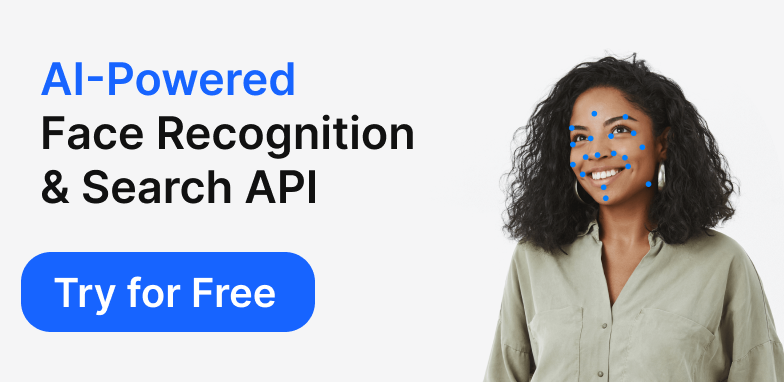
5 Best Uses of Face Recognition Technology in 2025

Face recognition technology has come a long way in recent years—and in 2025, it’s no longer just a futuristic concept. It’s part of our everyday lives, quietly powering everything from unlocking our smartphones to enhancing national security. As artificial intelligence and computer vision continue to advance, face recognition is finding its place in a wide range of industries, helping businesses and governments alike operate more efficiently, securely, and intelligently.
What makes this technology so impactful is its ability to identify and verify individuals in real time, with increasing accuracy and minimal friction. Whether you're walking into a hospital, a retail store, or your office building, chances are face recognition is already playing a role in how that space functions.
In this post, we’ll explore the top five real-world applications of face recognition in 2025, looking at how it’s being used, what benefits it brings, and what challenges still lie ahead. From public safety to personalized customer experiences, here’s how face recognition is shaping the future—right now.
Security and Surveillance
In 2025, face recognition technology continues to reshape how we think about safety in our daily lives. One of its most impactful applications lies in the field of security and surveillance. From city streets to airport terminals, advanced facial recognition systems are now deeply integrated into public safety strategies, allowing for faster response times and more effective monitoring.
Smart cities around the globe are leveraging this technology to create safer urban environments. By linking facial recognition with existing surveillance infrastructure, authorities can now detect threats in real-time, identify individuals on watchlists, and even analyze crowd behavior to anticipate potential incidents before they escalate. This proactive approach marks a shift from traditional surveillance to intelligent, automated systems capable of providing actionable insights.
Real-time face recognition in public spaces not only aids law enforcement but also helps manage large events, monitor restricted zones, and improve emergency response coordination. While the capabilities are impressive, cities are also working to balance innovation with privacy, ensuring the technology is deployed transparently and responsibly.
Smartphone and Device Unlocking
Unlocking your phone with a glance has become second nature in 2025, thanks to the evolution of facial recognition in personal devices. What once felt futuristic is now a daily convenience for millions of users worldwide. Modern smartphones, laptops, and even smart home devices are equipped with highly accurate facial recognition systems that offer both speed and security, streamlining user access without compromising protection.
The technology behind biometric authentication has significantly matured. Enhanced 3D facial mapping, infrared scanning, and liveness detection have made it harder than ever to spoof or bypass these systems. Unlike passwords or PIN codes, your face can’t be easily guessed, lost, or stolen—making it a more reliable option for personal security.
Retail and Customer Experience
In 2025, face recognition technology is redefining how we shop. Retailers are embracing it not just as a security tool, but as a powerful driver of customer experience and personalization. The moment a customer walks into a store, facial recognition systems can identify returning shoppers (with their consent), recall past purchases, and tailor recommendations in real time—turning routine shopping into a personalized journey.
Imagine being greeted by name, receiving product suggestions based on your preferences, or getting notifications about items you were eyeing online—all as you browse the aisles. This level of customization, powered by AI and facial data, helps retailers build stronger relationships with their customers while improving satisfaction and loyalty.
At the same time, checkout processes are becoming faster and more seamless. With smart kiosks and face-based payment systems, long lines and fumbling for wallets are becoming things of the past. Shoppers can simply pick up what they need and check out with a quick glance, streamlining the in-store experience from start to finish. These innovations don’t just reduce wait times—they make retail environments smarter, more efficient, and more enjoyable.
Healthcare and Patient Identification
In the healthcare sector, face recognition is proving to be more than just a convenience—it’s becoming a vital tool for improving accuracy, efficiency, and patient safety. In 2025, hospitals and clinics are increasingly using facial recognition to streamline administrative processes and reduce the burden of manual data entry. With a quick scan, patients can check in, access medical records, and verify their identity, all without needing to present documents or remember login credentials.
This technology is helping healthcare providers cut down on wait times, minimize human error, and ensure that the right treatment is delivered to the right person. From emergency rooms to outpatient centers, facial recognition simplifies workflows by automatically pulling up patient histories and linking them with current appointments or procedures.
Attendance and Workforce Management
In 2025, face recognition technology has become a game-changer in the way organizations manage their teams. Traditional methods of tracking attendance—badges, PINs, or fingerprint scanners—are being replaced by faster, more hygienic, and more accurate touchless solutions. With facial recognition, employees can clock in and out simply by walking past a camera or kiosk, eliminating bottlenecks at entry points and reducing physical contact.
This seamless approach to time tracking improves not only efficiency but also accountability. It’s much harder to "buddy punch" or manipulate attendance when each face is uniquely tied to an individual. Organizations benefit from real-time insights into who is on-site, when they arrived, and how long they stayed—data that feeds directly into HR systems without manual input or the risk of errors.
When integrated with human resource platforms, facial recognition makes it easier to manage schedules, monitor remote or hybrid workforces, and ensure compliance with labor regulations. It’s a modern solution that meets the evolving needs of today’s dynamic workplaces, delivering greater transparency and streamlined operations from the front desk to payroll.
Conclusion
As we look across industries in 2025, it’s clear that face recognition technology has evolved from a niche innovation into a powerful tool shaping our everyday experiences. From enhancing public safety and modernizing retail to revolutionizing healthcare and workplace management, its applications are as diverse as they are impactful. What unites them all is a common goal: to make systems smarter, faster, and more human-centric.
At the same time, this rapid adoption brings important questions about privacy, data security, and ethical use. Striking the right balance between innovation and responsibility will be key to ensuring that facial recognition continues to serve the public good without compromising individual rights.
Whether it's making your daily commute safer, your shopping more personal, or your workplace more efficient, facial recognition is clearly here to stay—and 2025 is just the beginning of what it can achieve.
